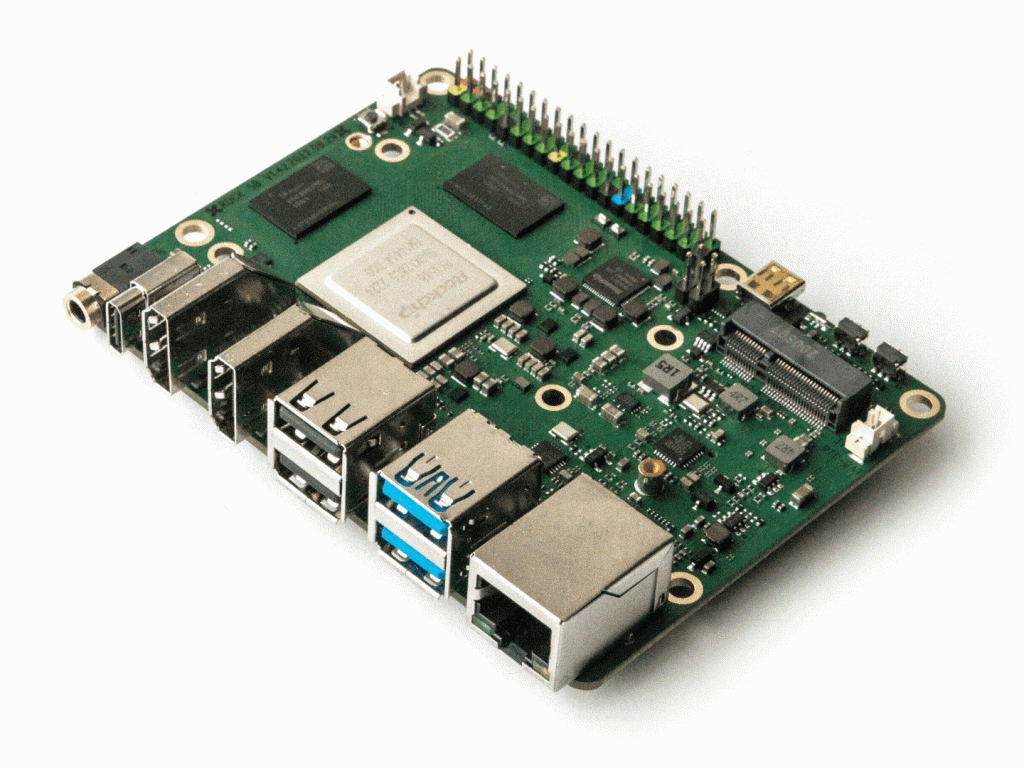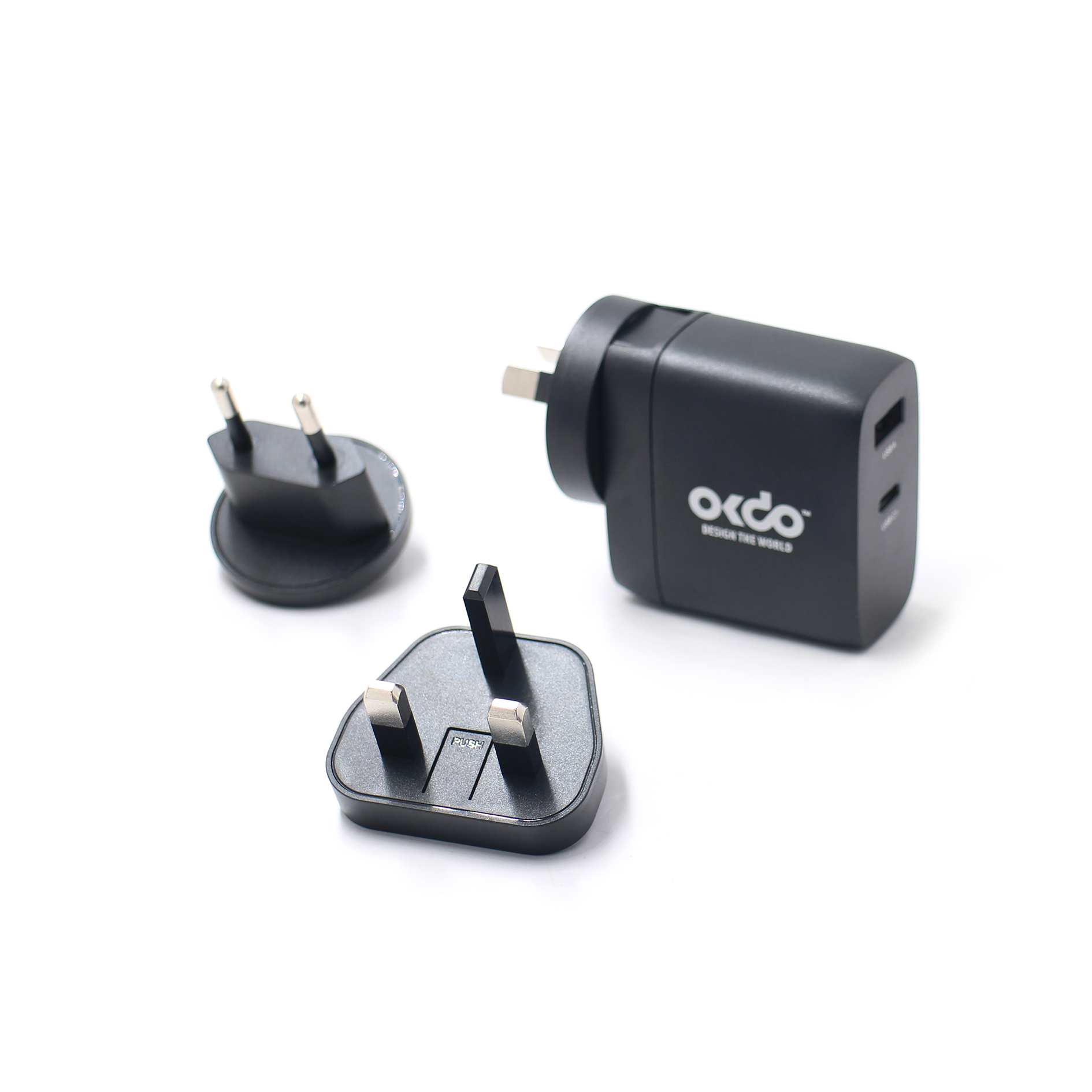- Step 1: Download OS
- Step 2: Imaging software
- Step 3: Flash the SD card
- Step 4: Connect the Cables
- Step 5: Boot
- Step 6: Change the Password
- Step 7: Wallet
- Step 8: Update System
- Step 9: Set Display (Optional)
- Step 10: Set Keyboard (Optional)
- Step 11: Language & Timezones (Optional)
- Step 12: Software Centre
- Step 13: Shutdown
- Summary
Get started with the next-gen single board computer, ROCK 5B, and learn how to download and install Debian Bullseye (64-bit) onto an SD card and perform the basic system setup. This handy guide will tell you everything you need to know to get started with the ROCK 5B in a few easy steps.
Meet the ROCK 5B, a fast and flexible Single Board Computer (SBC) with an 64-bit, 8-core Arm processor, 8 or 16MB RAM options and multiple permanent storage options (microSD, eMMC & NVME) with upto 8K HDMI video capabilities. Built-in to the SOC is an NPU running at upto 6TOPs for AI workloads.
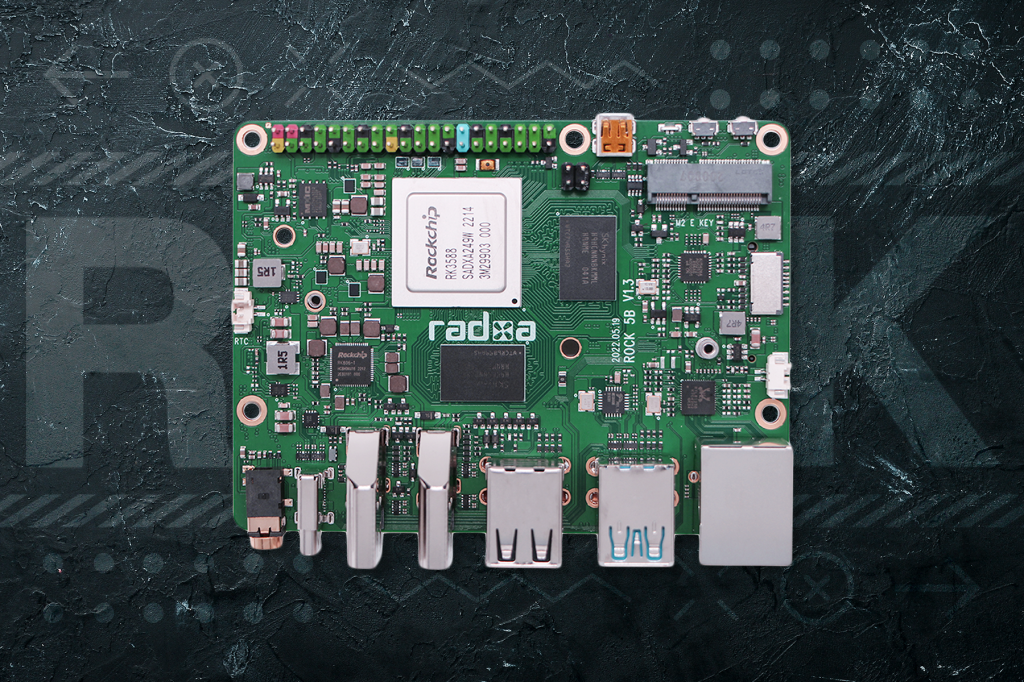
Android 12, Debian Bullseye (KDE) & Ubuntu Server 64-bit Linux operating systems are officially supported along with several other community builds.
In this Getting Started we show how to download and install Debian Bullseye onto an SD card and perform the basic system setup. This will give you a highly functional KDE desktop with GUI tools for system administration together with a set of applications for general use on your ROCK 5B, from which you can add further Open Source applications to your liking.
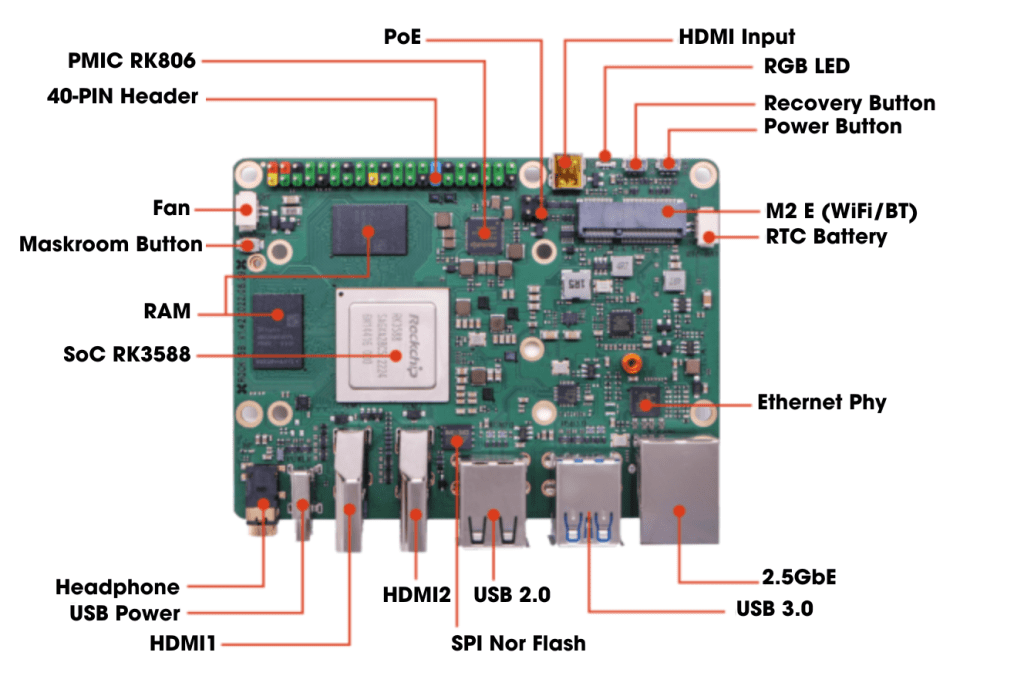
Parts Needed to Get Started with ROCK 5B:
All parts needed to get started:
- The ROCK 5B single-board computer
- OKdo Multihead Dual Port USB Quick Charge Power Supply (PSU) 36W
- 32 GB MicroSDHC Card Class 10
- Host computer Windows/Mac/Linux
- HDMI monitor
- USB keyboard
- USB mouse
- HDMI cable – Full size
- Cat 5 Ethernet cable
- Internet connection and router
Step 1: Download OS
Download a copy of the Debian desktop OS for the ROCK 5B. You can do this using either a Windows, Mac or Linux host PC or laptop. Save the image file to somewhere convenient on your storage.
- Visit the OKdo Software & Downloads hub and click the Debian Bullseye link for the ROCK 5B;
- Allow the image file to download – it is about 1.4GB in size;
- The filename will be similar to this depending on the version: rock-5b_debian_bullseye_kde_b36.img.xz
- There is no need to expand the compressed file.
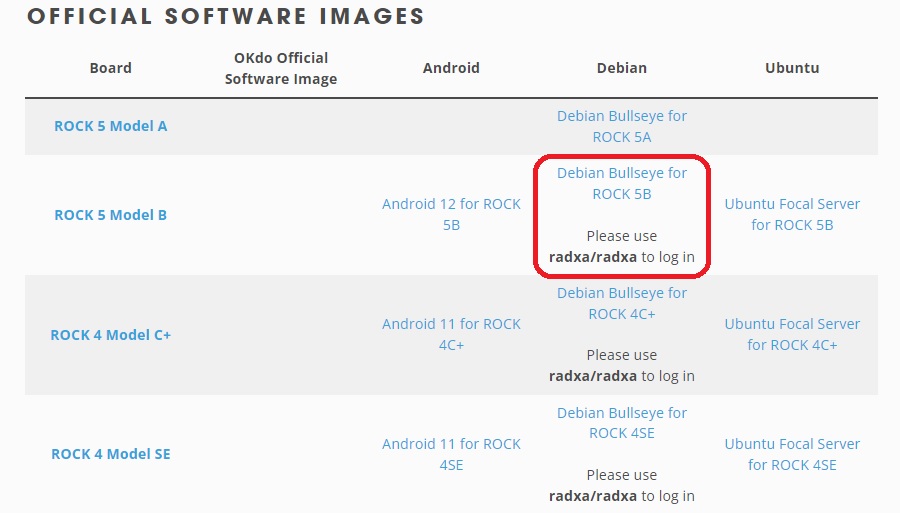
Step 2: Imaging software
An OS image cannot be copied directly to an SD card as you would a normal file or directory. You need special-purpose imaging software to flash the image to the SD card. We recommend the Open Source balenaEtcher, which is available on either Windows, Mac or Linux. It also performs some validation checks on the flashed image:
- Visit the download page at balenaEtcher and install the version for your host operating system.
Step 3: Flash the SD card
Now everything is ready to flash the OS image onto the microSD card. Use a good quality, branded, 32GB or larger card. We use SanDisk Ultra cards which are fast, durable and reliable.
- Insert the SD card into a card reader on your host PC;
- Open balenaEtcher and select the OS image you downloaded in Step 1;
- Select the SD card to flash – be careful to choose the correct one;
- Click the Flash button;
- Wait for the imaging and validation process to complete, then eject the SD card and remove it from your host PC.
Tip: If your system asks you to format the card at any time, just click cancel.
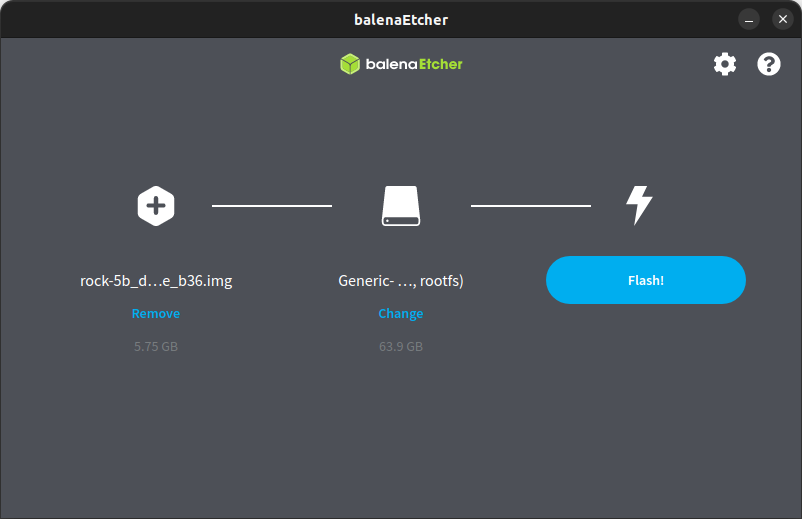
Step 4: Connect the Cables
Now that your SD card is prepared, connect up your ROCK 5B:
- Connect a keyboard and mouse to the USB 2.0 (Black) sockets;
- Attach a full-size HDMI cable to the HDMI 1 output and your monitor;
- Connect a CAT5 Ethernet cable to the Ethernet port and your internet Router / Switch;
- Carefully insert the SD card into the card socket with the gold pins on the card facing upwards;
- Connect the power supply to the USB-C socket but do not power it yet.
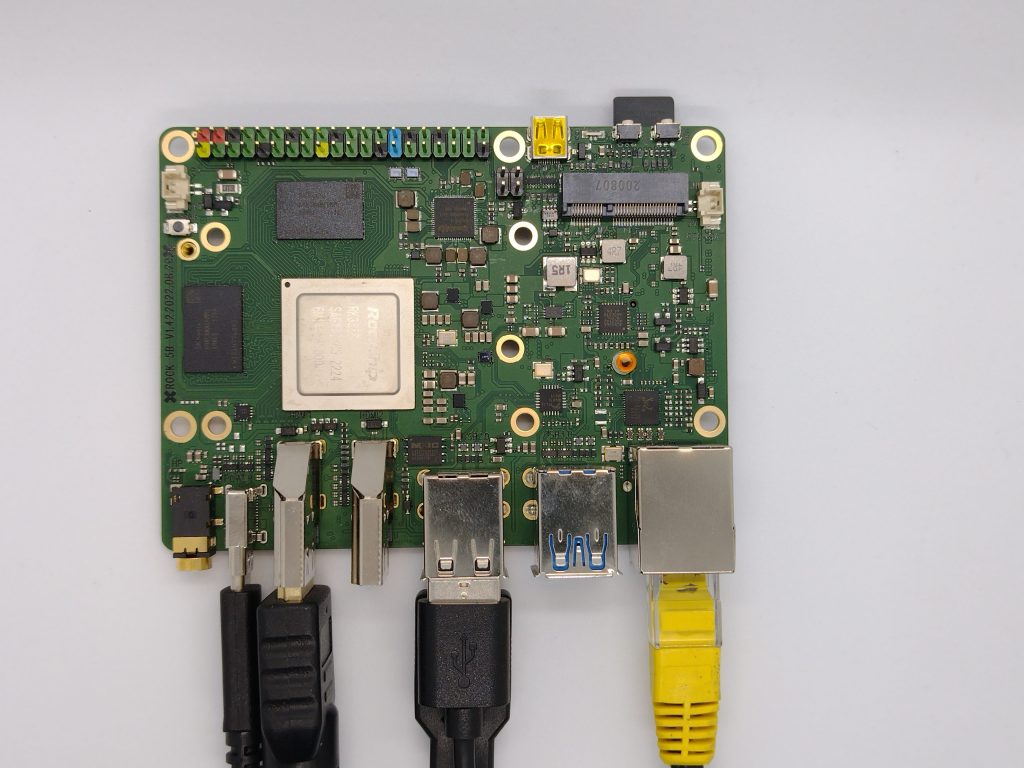
Step 5: Boot
Check that everything is prepared as in the steps above, turn on your monitor and plug in the power supply to boot the ROCK 5B:
- The green power LED will turn on, and the blue activity LED should start blinking after a few seconds.
- The first boot takes only a few seconds, and the monitor will scroll the boot messages; then, the KDE Desktop will appear with the login dialogue box.
Log in with the Radxa user:
- username: radxa
- password: radxa
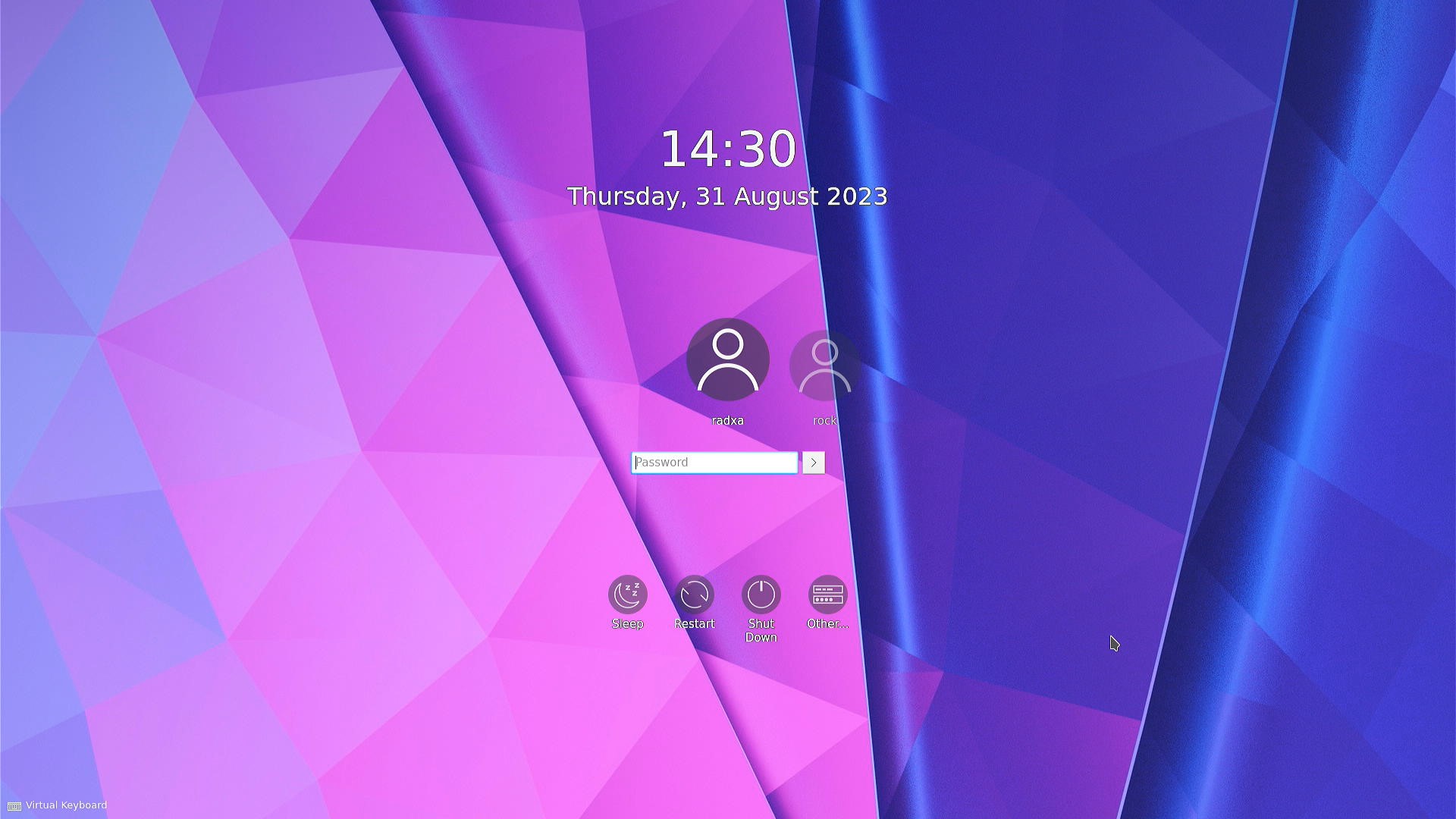
Step 6: Change the Password
Click the System Settings icon in the bottom left of the taskbar and select Users. You can now change the passwords for both the Radxa and Rock users.
Tip: By default, two user accounts are setup. If you only use one user account you can increase security by deleting the Rock account
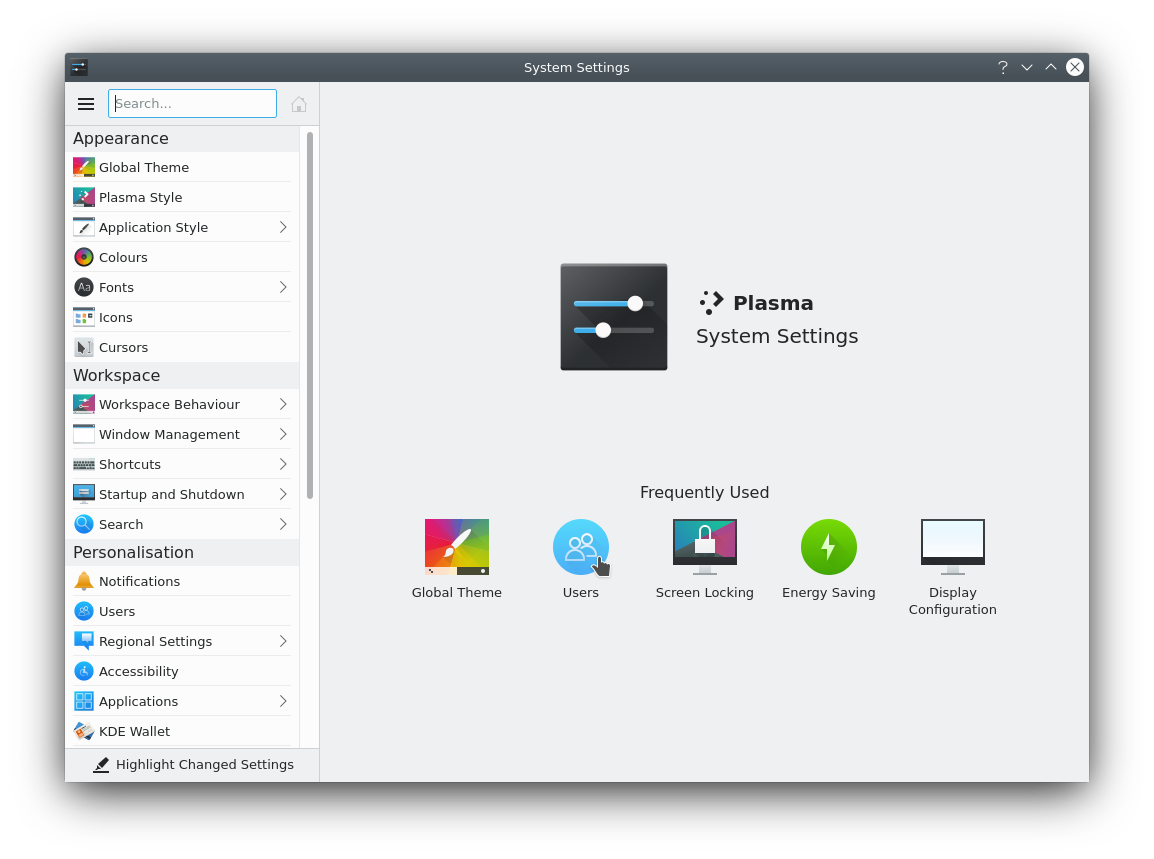
Step 7: Wallet
Shortly after logging in the KDE Wallet will pop-up for the first time. Choose the Blowfish option and click Finish. It will ask for a password so use a secure one as this stores passwords used by applications that need them.
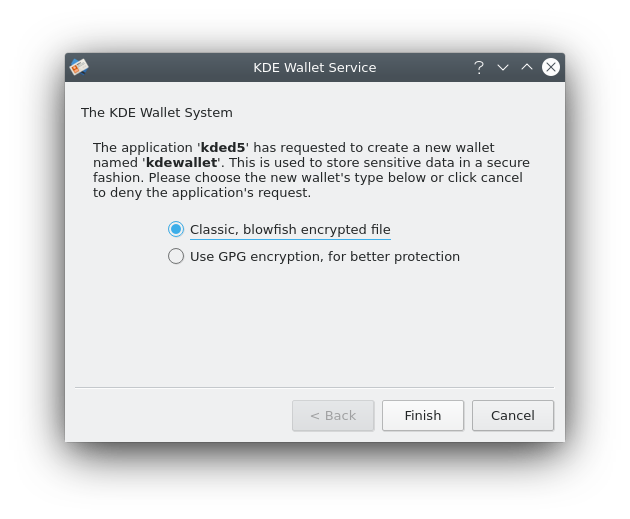
Step 8: Update System
The OS and installed software is constantly being updated so you can pull in these changes with KDE Update Manager. This will show up in the bottom right hand side of the taskbar when updates are available.
Click the Updates icon and select Update All to bring your system up to date. This might take a few minutes the first time.
Once all the updates have finished click the KDE icon on the bottom left of the taskbar and choose Restart to let all the changes take effect.
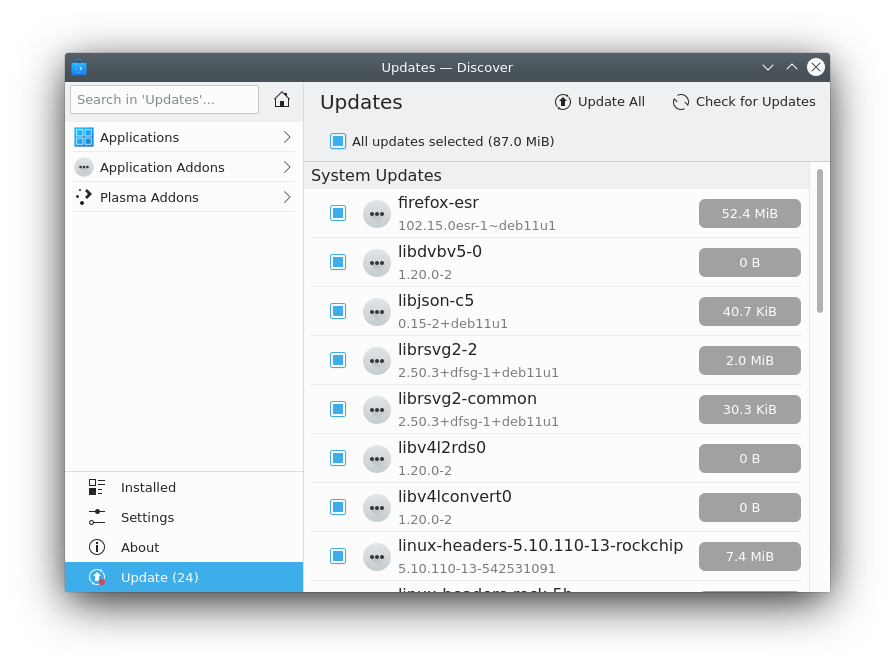
Step 9: Set Display (Optional)
Your HDMI display settings should be recognised automatically. If they need adjusting, you can set them using the Display Manager from the System Settings icon in the bottom left hand side of the toolbar.
Click Hardware -> Display and Monitor, adjust them to your liking, then click Apply
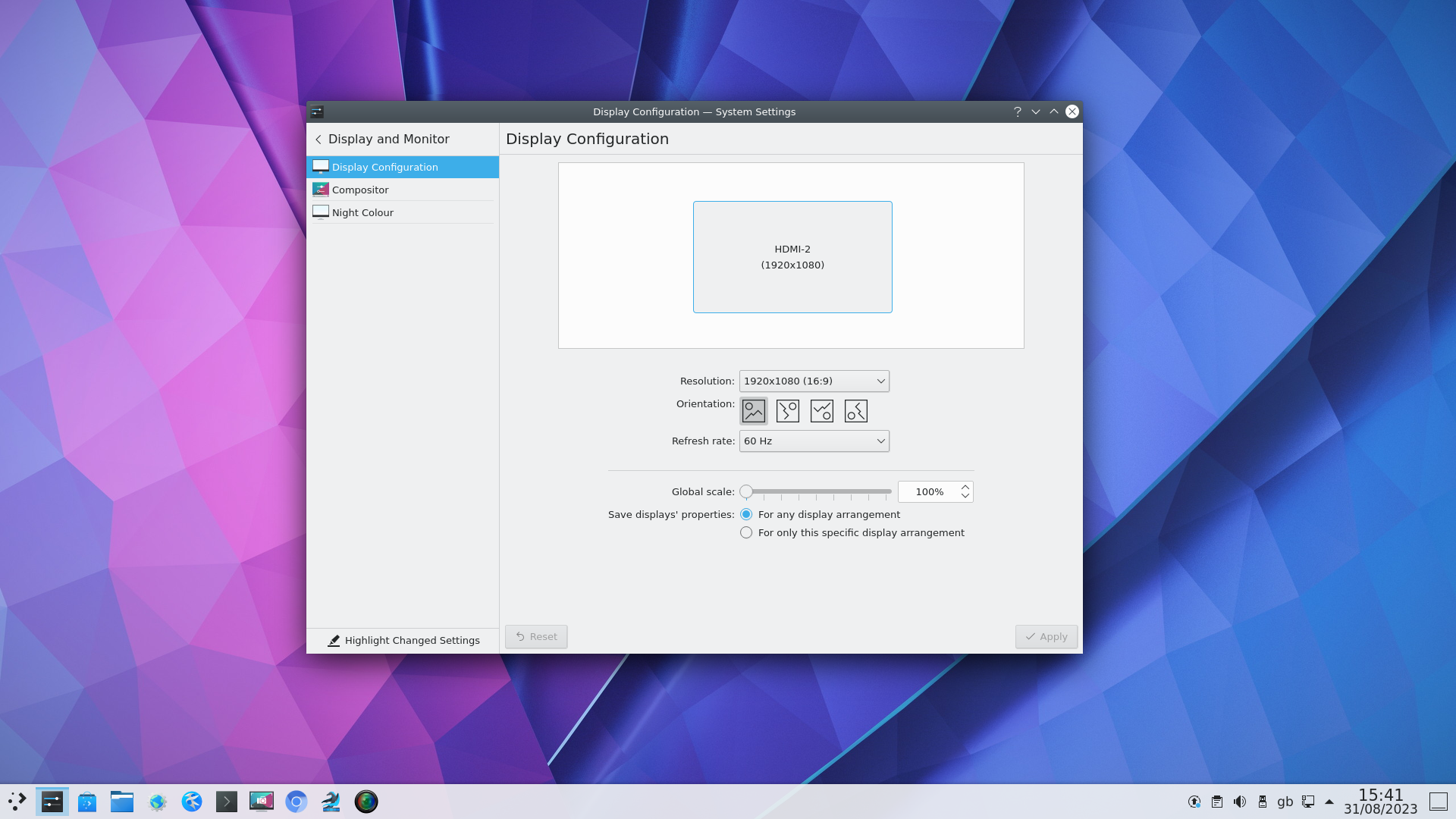
Step 10: Set Keyboard (Optional)
The default keyboard setting is US English. This can be changed using the Systems Settings icon.
Choose Hardware -> Input Devices -> Keyboard and use the Add button to add any keyboards you require.
Move your default keyboard to the top of the list using the Move Up / Down buttons
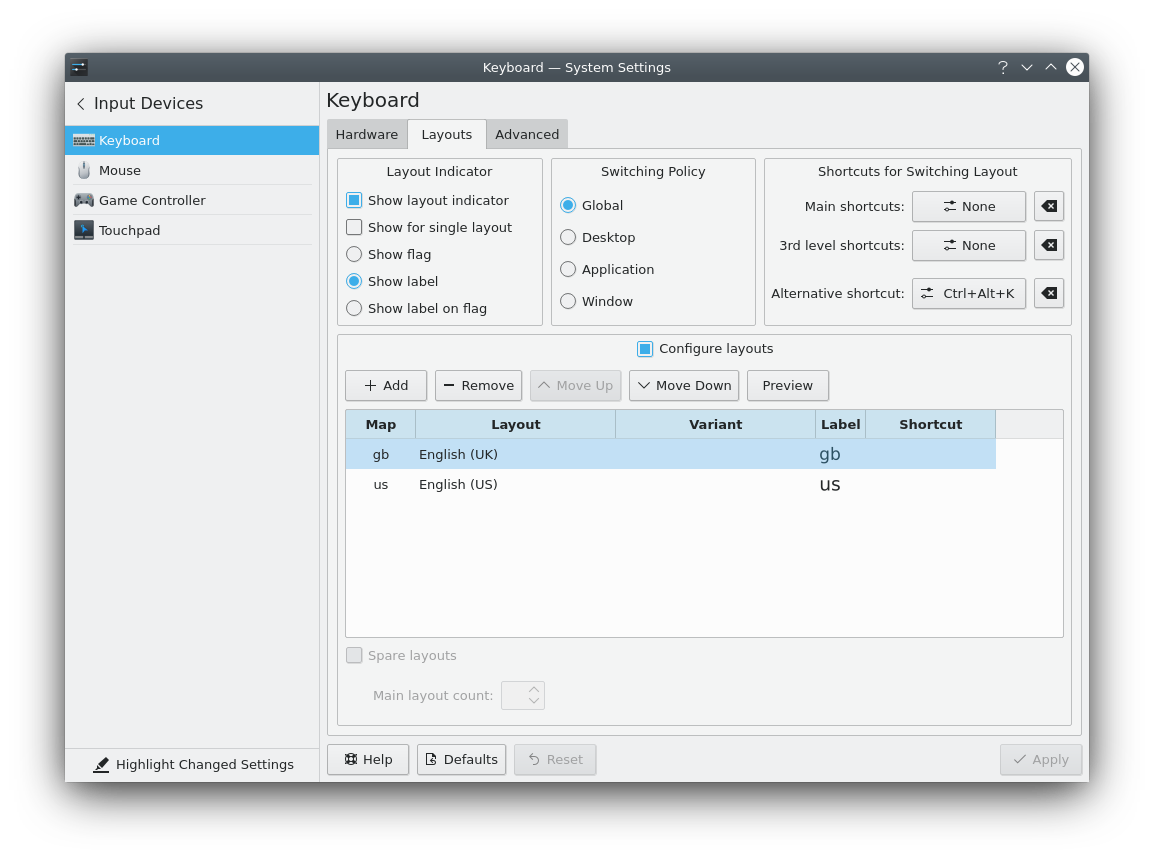
Step 11: Language & Timezones (Optional)
The default language is American English and the default time setting is Universal Time (UTC). If you want to change these they can be set using the System Settings icon.
Choose Regional Settings and set your preferred Language and Date & Time.
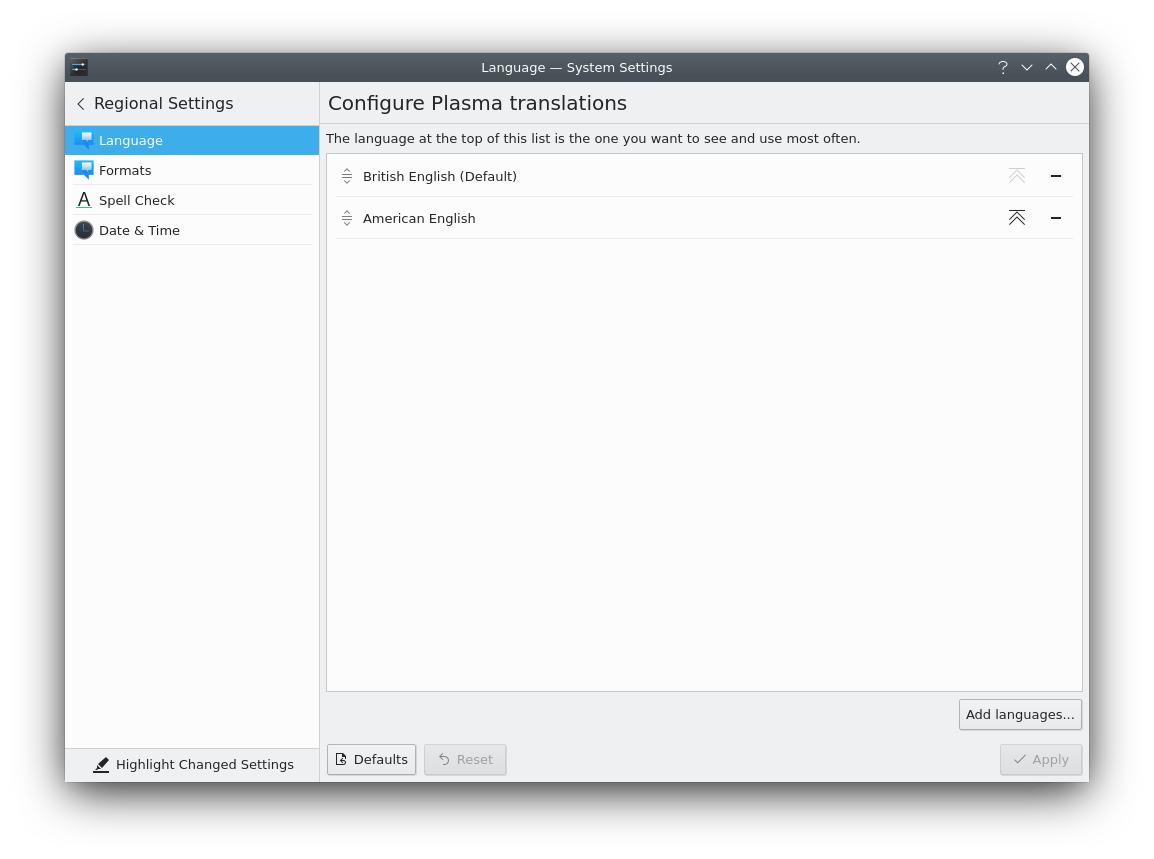
Step 12: Software Centre
The Debian package repository (Debian Repo) contains over 50K Open Source software applications called Packages, most of which will work with the ROCK 5B.
Click the Software Centre icon in the bottom left taskbar and enter a search term. The Software Centre will present a list of free Open Source applications that you can install with one click.
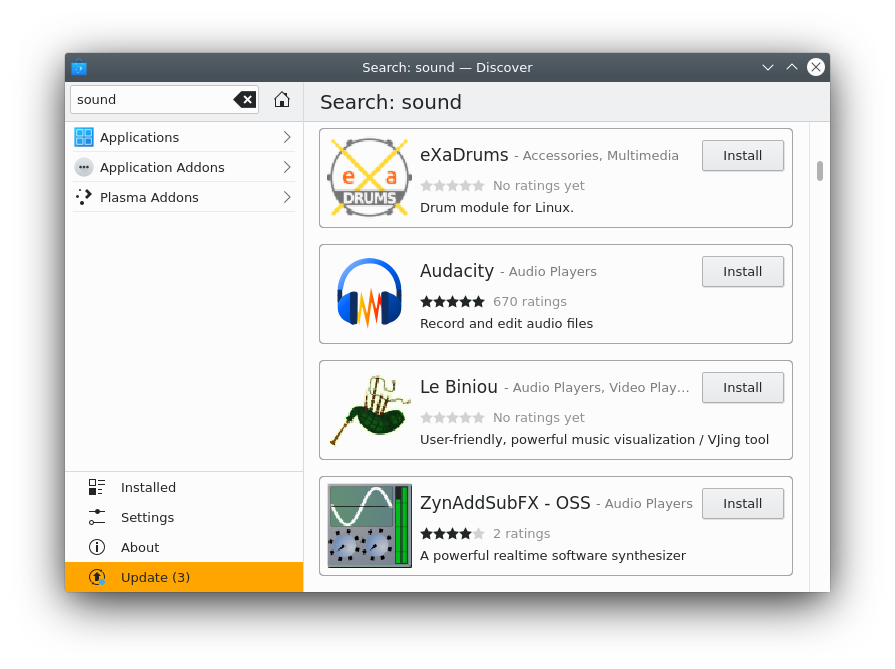
Step 13: Shutdown
Linux systems need shutting down properly before removing the power supply, this avoids corrupting the SD card.
Click the KDE icon in the bottom left corner of the taskbar and select Leave -> Shutdown. The shutdown screen will appear and you can click OK or just wait for it to occur.
Shutdown is complete when the blue heartbeat LED is off but the green power LED remains on.
Tip: If you don’t have a monitor attached you can safely shutdown the ROCK 5B with the power button. If the system is off, pressing the power button will start it up
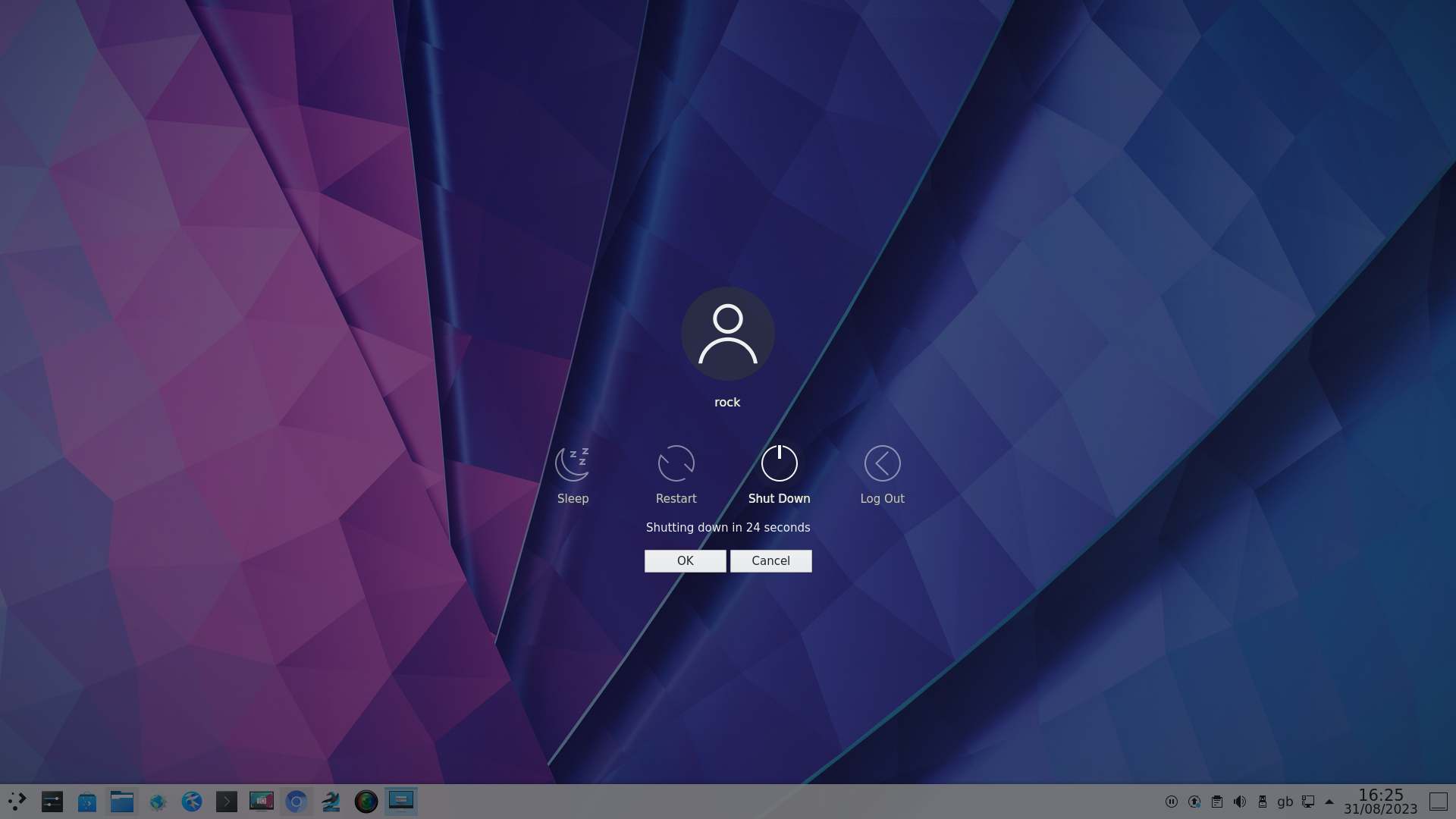
Summary
If you have followed all the steps in this guide you will have a nicely configured Debian KDE desktop system for your ROCK 5B setup for general use.
This is a very fast and flexible SBC with plenty of options for both extra hardware and software. There are now thousands of Open Source software applications at your fingertips which can be added to your system, from programming environments, Machine Learning & AI, audio and video editing, office applications, scientific software and gaming, so start exploring!


Excited to discover what other ROCK single-board computers, compute modules and accessories are coming next into our range? View more in our ROCK Shop, and find the perfect Raspberry Pi alternative. You no longer need to hunt for stock!
ROCK Shop


Let’s invent the future together
What’s your challenge? From augmented reality to machine learning and automation, send us your questions, problems or ideas… we have the solution to help you design the world. Get in touch today.



